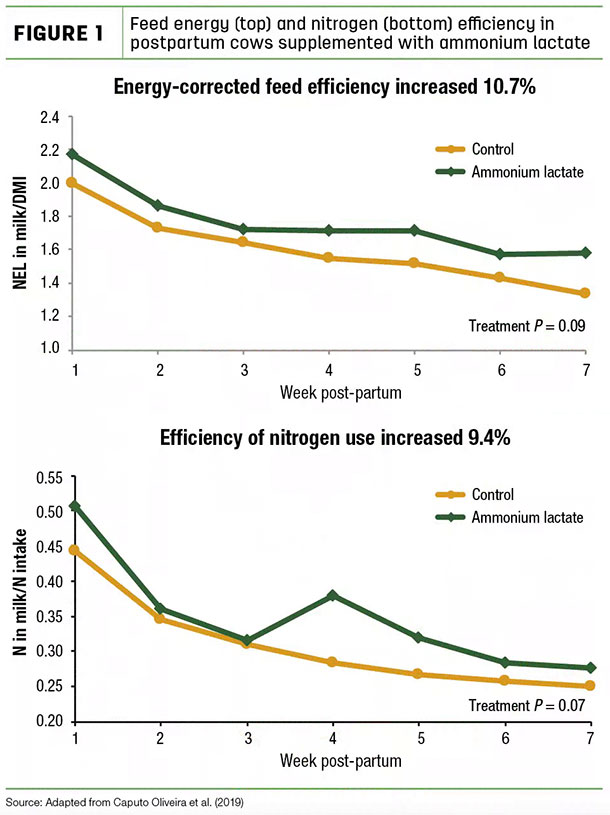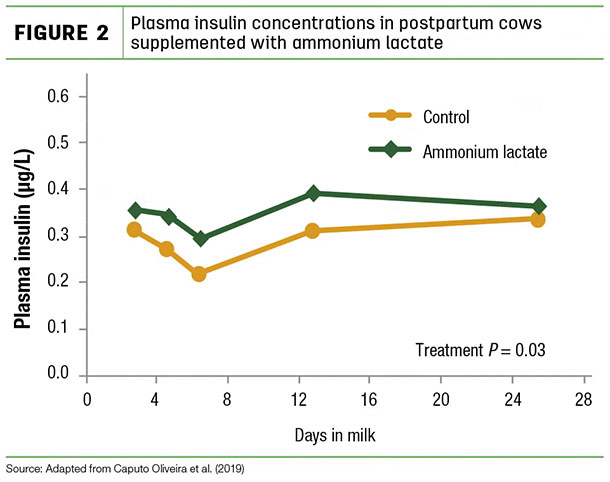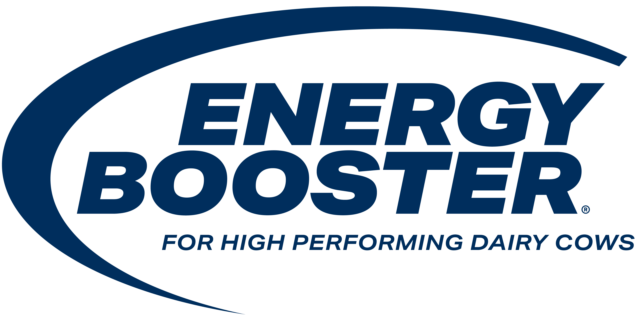That being said, this period can also be one of opportunities, one of which is the chance to better tailor the diet to the specific needs of the postpartum period and therefore have positive impacts on cow health and performance.
As highlighted in a December article, “Uncovering the hidden glucose source cows need,” supply of glucose to support milk production relies heavily on the liver’s generation of glucose from precursors including propionate, lactate, some amino acids and glycerol by the process of gluconeogenesis. Propionate is the primary glucose precursor in the fed state, but during negative energy balance, like around calving, the liver relies more heavily on other precursors for energy and glucose. For example, during negative energy balance, cows mobilize body fat which provides fatty acids that can be taken up by the liver.

Fatty acids cannot be used to make glucose; however, they can be oxidized to make energy which helps fuel, among other things, the energetically expensive process called gluconeogenesis. Glycerol (the backbone of triglycerides stored in fat tissue) is also taken up by the liver during fat mobilization and can be used as a glucose precursor, but it only contributes modestly to glucose generation.
Use of alternative precursors and balance of these pathways is key in maintaining the liver’s ability to make glucose and avoiding hyperketonemia and fatty liver. While it has been known that the liver can use lactate, supplementation of lactate to the liver without causing rumen acidosis has been challenging. A recent research study supplementing ammonium lactate postpartum revealed this nutritional strategy may be able to do just that.
In the study, 40 multiparous cows were fed a prefresh ration targeted to have 40% to 60% subclinical ketosis (SCK) after calving in order to be consistent with transition cows across the state. Recall that the term “incidence” is different from “prevalence.” Incidence is based on repeatedly sampling individual cows to identify all cases of a disorder, while prevalence is the number of positive cases during any single check. For reference, SCK incidence of 60% would be roughly equivalent to 24% to 30% prevalence, which is within the prevalence range in Wisconsin, the U.S. and Canada for multiparous cows based on research and epidemiological data.
At the time of calving, cows were either fed a control lactating cow diet or a lactating cow diet with 2 pounds liquid ammonium lactate (GlucoBoost) per head in substitution for soybean meal (formulated on a dry matter basis) to maintain the same diet crude protein (CP) content. Cows were fed the diets for 45 days, and milk production, milk components, bodyweight and blood metabolites were quantified frequently during the study. Rumen fluid samples from a subset of cows that were rumen cannulated allowed us to verify that cows did not develop sub-acute acidosis.
The original hypothesis of the study was that by providing a glucose precursor (in this case lactate) to the liver, we would support liver function and reduce hyperketonemia. Control cows in the study had a hyperketonemia incidence of 60%. Cows supplemented with ammonium lactate had 37% hyperketonemia and reduced blood beta-hydroxybutyrate (BHB) in the immediate postpartum period. This supported the hypothesis that providing glucose precursors to the liver could reduce hyperketonemia.
Cows fed ammonium lactate had lower blood fatty acids postpartum. This may have been because they were consuming a ration with a higher energy density due to the energy value of the ammonium lactate. Insulin was also greater in cows consuming ammonium lactate, which likely inhibited fat mobilization. This reduction in blood fatty acids could have further contributed to lower incidence of hyperketonemia in cows supplemented with ammonium lactate.
Cows in both groups had similar milk production (94 pounds per day) and milk components (4.9% fat, 2.87% protein) during the study. Cows supplemented with ammonium lactate had a slower increase in dry matter intake (DMI) from weeks three to seven. Together, this resulted in energy-corrected feed efficiency and nitrogen efficiency improving by 10.7% and 9.4%, respectively. We typically strive to maximize DMI postpartum, so a lower rate of DMI increase may seem counter-intuitive at first; however, it is important to note that dietary energy intake (dietary NEL), milk energy output, bodyweight and body condition score (and respective changes across the transition period) were similar between the control and treatment. Together with the increased insulin concentration, an indicator of sufficient energy status, these data support that treatment with ammonium lactate supported improved nutrient status, despite lower rate of increase in DMI.

What would allow a postpartum animal to have similar milk output with less feed intake and improved metabolic health? Could this be a product of providing more gluconeogenic precursors to the liver, as hypothesized? Measuring the amount of glucose produced by the liver is more complicated than simply measuring blood glucose because that concentration represents the balance of how much glucose the liver makes and how much glucose other tissues, like the mammary gland, use.
We can get an indication by looking at blood glucose together with milk lactose. In this study all cows had similar milk lactose output, but cows supplemented with ammonium lactate had greater blood glucose postpartum, suggesting there could have been more production of glucose by the liver, which is something we are continuing to analyze.
This research was the first in-depth look at postpartum nutritional supplementation with ammonium lactate, and it revealed the potential to improve feed efficiency and support metabolic health, both beneficial outcomes for the cow and the farm. ![]()
Full scientific manuscript is published in the Journal of Dairy Science (102:2283-2297) and was featured as the March 2019 Editor’s Choice article.
Rafael Caputo Oliveira is a former graduate student at the University of Wisconsin – Madison. Michael de Veth is vice president of R&D at Fermented Nutrition.

-
Heather White
- Department of Dairy Science
- University of Wisconsin –Madison
- Email Heather White






